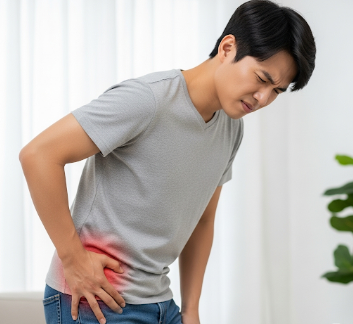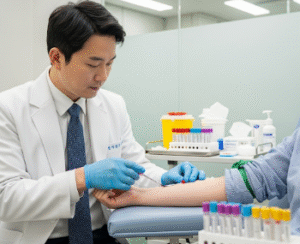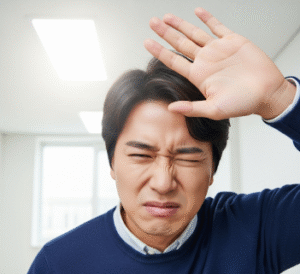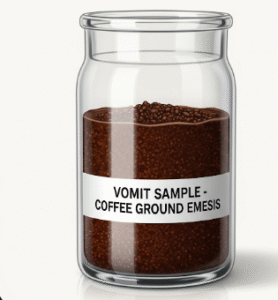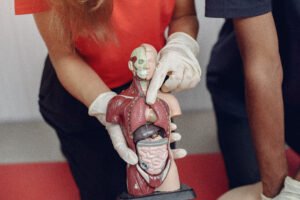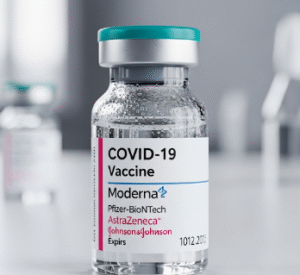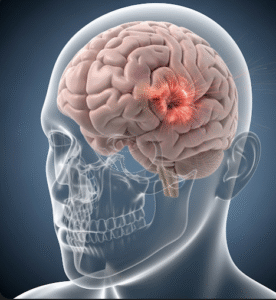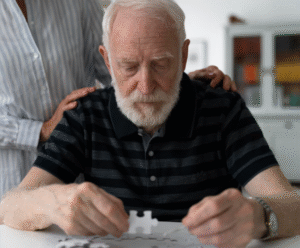Overview
Hip pain is a common condition affecting the hip joint or surrounding structures, including muscles, ligaments, tendons, and bursae. The hip is a ball-and-socket joint that supports the body’s weight and allows movement such as walking, running, and bending. Pain in this area can range from mild discomfort to severe, debilitating pain, limiting mobility and quality of life.
Hip pain may occur gradually due to overuse or aging, or suddenly due to trauma or injury. Causes can be orthopedic, muscular, neurological, or systemic. In South Korea, advanced orthopedic and rehabilitation centers offer comprehensive care for hip pain, including diagnosis, imaging, surgical and non-surgical treatments, and physical therapy.
Key Facts
🟢 ➤ Hip pain can originate from the joint itself or surrounding structures like muscles, tendons, and ligaments.
🟢 ➤ Common in adults and elderly individuals, but can affect all ages.
🟢 ➤ Causes include arthritis, fractures, bursitis, tendonitis, and nerve-related issues.
🟢 ➤ Symptoms may include pain, stiffness, swelling, limited range of motion, or radiating pain down the leg.
🟢 ➤ Early evaluation is crucial to prevent further joint damage and maintain mobility.
🟢 ➤ Korean hospitals provide advanced imaging, minimally invasive surgery, and rehabilitation programs for hip pain.
What is Hip Pain?
Hip pain is discomfort or pain located in the hip area, which can be felt in different regions:
➤ Anterior (front) hip pain – Often associated with hip joint problems or arthritis.
➤ Lateral (side) hip pain – Commonly related to bursitis, tendonitis, or muscle strain.
➤ Posterior (back) hip pain – May arise from sciatic nerve issues or referred pain from the lower back.
Hip pain may be acute or chronic, affecting daily activities such as walking, climbing stairs, or standing for long periods.
Symptoms Related to Hip Pain
Symptoms vary depending on the underlying cause and severity:
🟢 ➤ Pain in the hip joint or surrounding area, which may radiate to the thigh, groin, or buttocks.
🟢 ➤ Stiffness and difficulty moving the hip.
🟢 ➤ Swelling, warmth, or redness around the hip.
🟢 ➤ Limited range of motion or difficulty standing, walking, or climbing stairs.
🟢 ➤ Clicking, popping, or grinding sensations in the joint.
🟢 ➤ Pain worsened by activity or relieved by rest depending on the cause.
Causes / Possible Causes
Hip pain can result from joint, muscular, nerve, or systemic issues:
Arthritis
➤ Osteoarthritis – Wear and tear of hip cartilage causes stiffness and pain.
➤ Rheumatoid arthritis – Autoimmune inflammation of the joint lining.
Injuries and Trauma
➤ Hip fractures, dislocations, or labral tears often cause sudden, severe pain.
Bursitis and Tendonitis
➤ Inflammation of bursae or tendons around the hip leads to lateral hip pain.
Muscle Strain and Overuse
➤ Strained hip flexors, hamstrings, or gluteal muscles from repetitive activities.
Nerve-related Causes
➤ Sciatica or nerve compression in the lower back can refer pain to the hip.
Other Causes
➤ Infections, avascular necrosis, hip impingement, or systemic diseases can also cause hip pain.
When Should I See a Doctor?
Medical evaluation is necessary if you experience:
🟢 ➤ Severe or persistent hip pain that does not improve with rest.
🟢 ➤ Inability to bear weight or difficulty walking.
🟢 ➤ Swelling, redness, or warmth around the hip joint.
🟢 ➤ History of trauma or injury to the hip.
🟢 ➤ Signs of infection, fever, or unexplained weight loss.
Early diagnosis allows appropriate treatment, prevents joint damage, and improves mobility.
Care and Treatment
Treatment depends on the underlying cause, severity, and patient age:
Conservative Treatments
➤ Rest, activity modification, and avoidance of aggravating movements.
➤ Physical therapy to strengthen muscles, improve flexibility, and relieve pain.
➤ Pain relief medications such as NSAIDs for inflammation.
➤ Ice or heat therapy to reduce pain and swelling.
Medical Interventions
➤ Corticosteroid injections for bursitis or arthritis-related inflammation.
➤ Medications for underlying conditions like rheumatoid arthritis.
Surgical Treatments
➤ Hip replacement surgery for severe arthritis or joint damage.
➤ Arthroscopic surgery for labral tears or hip impingement.
➤ Minimally invasive procedures available in South Korea’s orthopedic centers.
Rehabilitation
➤ Post-surgery or injury rehabilitation focuses on strengthening, mobility, and safe return to activity.
➤ South Korea provides advanced rehabilitation programs with physiotherapy and occupational therapy.
Highlights (Clean Green Arrow Version)
🟢 ➤ Hip pain can originate from the joint, muscles, tendons, ligaments, or nerves.
🟢 ➤ Causes: arthritis, fractures, bursitis, tendonitis, muscle strain, nerve issues, or systemic diseases.
🟢 ➤ Symptoms: pain, stiffness, swelling, limited range of motion, clicking, or radiating pain.
🟢 ➤ Early diagnosis is crucial to prevent joint damage and maintain mobility.
🟢 ➤ Treatment includes rest, physical therapy, medications, injections, surgery, and rehabilitation.
🟢 ➤ South Korea offers advanced orthopedic care, imaging, minimally invasive surgery, and rehabilitation programs.

